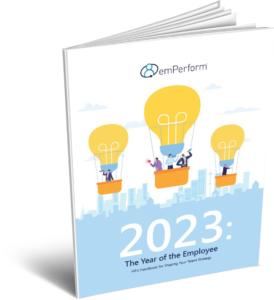
Get the eBook
2023 is shaping up to be the official Year of the Employee – where effective performance management, reward, and engagement strategies will determine if a company can properly develop & retain top talent and thrive amidst uncertainty.
emPerform delivers a complete suite of performance management functionality to better
Align, Develop, Reward & Retain a world-class workforce.

Get started today!
Book a free demo with an emPerform expert to discuss your performance management needs and see our emPerform platform in action.
Explore more performance management resources from our experts:
Download your 2023: The Year of the Employee eBook Now!





